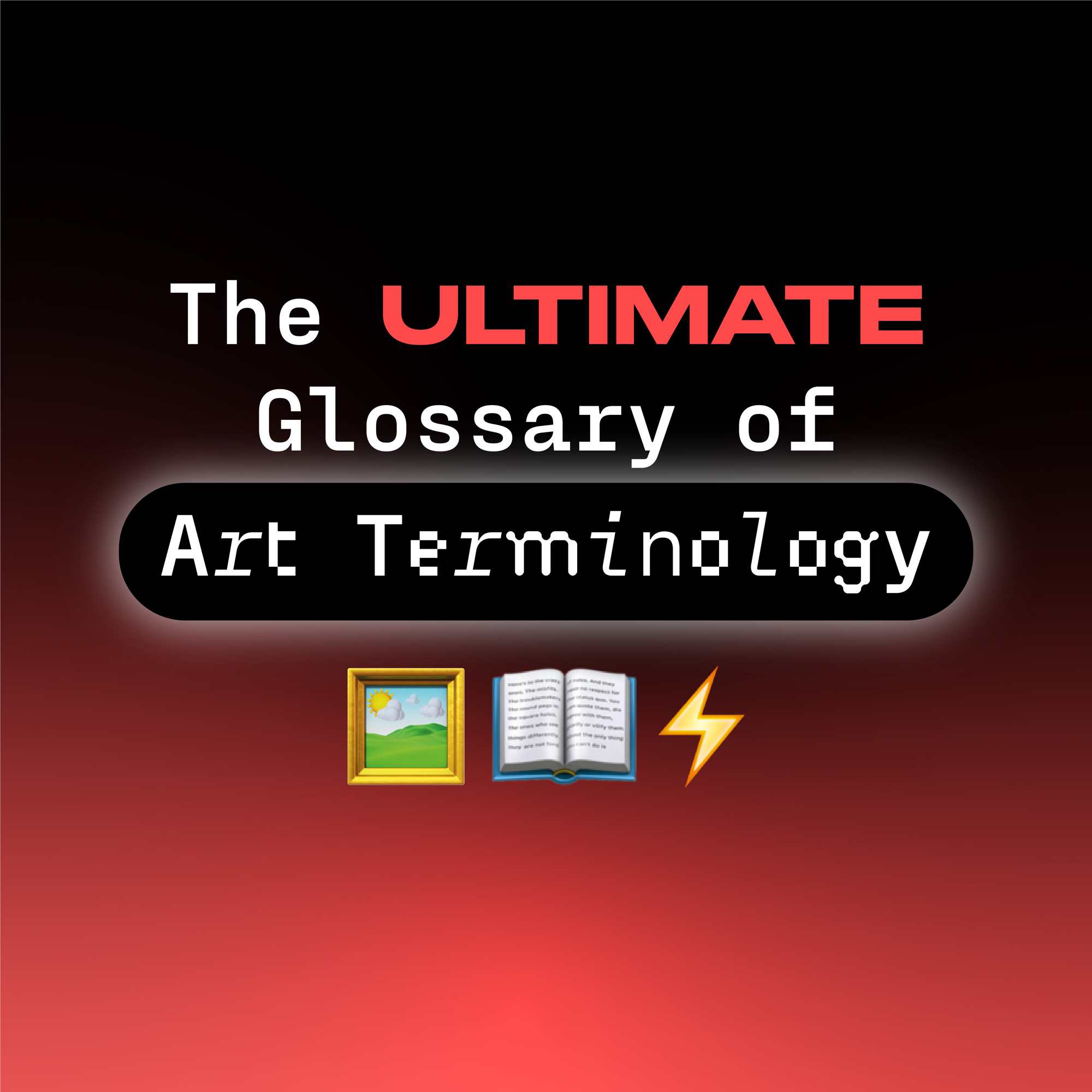The Ultimate Glossary of Art Terminology
By Terrain.art | Jan 5 2022 · 8 min read
From gouache to tempera, from abstraction to Expressionism, we cover all the terms you need to know to become an art pro.
In an episode of the American sitcom “Modern Family,” Cam, the flamboyant son-in-law of the family, takes the children to a modern art museum. He has studied all about Wassily Kandinsky, whose exhibits are supposed to be on display. However, once inside the museum, he learns that the exhibition was temporary, and the new exhibits are that of Henri Matisse. Cam tries hard to impress the children with his knowledge of Kandinsky while explaining the works on Matisse, but fails miserably, creating much drama.
Many of us have been in Cam’s position due to our lack of knowledge of various artistic styles and nomenclature related to art. We have, therefore, come up with the perfect go-to guide explaining the key concepts in art. Here’s our ultimate glossary of art terminology.
Abstraction
Abstraction reflects ideas or concepts conveyed through, colour, texture, and form rather than representational reality. Abstract art does not aim for an accurate representation of visual reality. Rather, it uses forms, such as geometric shapes or gestural marks, to depict external reality. Sometimes called non-objective art, this movement has been central to developments in art history since the early 1900s. Kandinsky, Pollock, Piet Mondrian, Kazimir Malevich are some of its most famous exponents.
Acrylic
This is a fast-drying paint made from pigments suspended in an acrylic polymer emulsion, along with plasticizers and stabilizers. Although most acrylic paints are water-based, they become water-resistant once dry.
Biennale
It is Italian for the phrase, “every other year.” It refers to any event that is held every two years and is commonly used for international art exhibitions, such as the Venice Biennale, Biennale de Paris, and Kochi-Muziris Biennale in Kerala, India.
Canvas/on Canvas
Canvas is a plain-woven fabric usually made from cotton, sometimes from linen. Known for its durability, it is the preferred medium for artists, who stretch the fabric over a wooden frame to paint it.
Charcoal
An artist’s charcoal is a dry art medium made from powdered carbon and held together by a wax or gum resin. Three common varieties include compressed, willow, and vine. In compressed charcoal, the powder is held together by a binding agent. Willow and vine charcoals are made from willow and vine branches respectively that are burnt to a precise degree of hardness.
Cubism
Arguably one of the most influential art styles of the 20th century, Cubism brought different views of the subject of the artwork together in the same painting, resulting in a fragmented depiction of the subject. Pioneered by artists Pablo Picasso and Georges Braque, this style opened infinite possibilities of representing visual reality.
Decorative Art
Decorative arts are works of art or craft that may be mainly concerned with design and decoration. This art is primarily known for its aesthetic value although it might have functional utility as well.
Digital Print
Digital Prints involve the process of printing digital-based images directly onto a variety of media, including canvas, paper, fabrics, etc. A digital print can only be considered as an original work of art when the artist intends to present it as such.
Etching and Engraving
Both are print-making techniques. In etching, an acid is used to cut into a metal plate, which holds the ink and forms the printed image. Engraving, on the other hand, is a related technique, in which incisions are made with a tool on a metal plate. The result may be a work or a printing plate used for intaglio printmaking.
Expressionism
The term refers to an artistic style in which the artist sought to portray subjective emotions rather than objective reality. Some of the common concerns of expressionist artists include self, psyche, body, spirituality, etc. Famous expressionist paintings include Edvard Munch’s The Scream, Wassily Kandinsky’s Der Blaue Reiter and Egon Schiele’s Sitting Woman with Legs Drawn Up.
Gouache
Gouache is a type of water-medium paint consisting of natural pigment, water, and a binding agent. Much like watercolour, gouache is opaque. As such, when it is applied, the line drawing and the paper underneath will not show through.
Impasto
This refers to a technique in painting in which paint is applied in such thick strokes that the strokes of the brush are clearly visible.
Impressionism
A 19th-century movement characterized by short, broken brushstrokes, pure unblended colours, emphasis on the effects of natural light and simple composition. Claude Monet’s Impression, Sunrise gave the movement its name when the critic Louis Leroy accused it of being a sketch or an impression.
Installation Art
Installation art is an artistic genre of works that are three-dimensional and site-specific and are designed to transform our understanding of space.
Medium
The materials that are required to create an artwork, such as oil paints, watercolours, tempera, etc.
Oil on Canvas
It refers to a particular type of painting technique, in which pigments are held together by a drying oil, usually linseed oil. The oil paint can be thinned out by using solvents such as turpentine.
Still Life
It refers to paintings that depict inanimate objects such as dead animals, fruits, kitchen items, glasses, books, jewellery, etc.
Tempera
A painting medium that is known for its fast-drying properties. It consists of pigments usually mixed with a water-soluble binding agent such as egg yolk.
Woodcut
A technique of printmaking, it involves carving out an image from a block of wood and then pressing directly on the surface of the paper with ink. This was the earliest form of printmaking and was widely used in book publications.
For more art terms, check out Terrain.art’s Glossary page.

